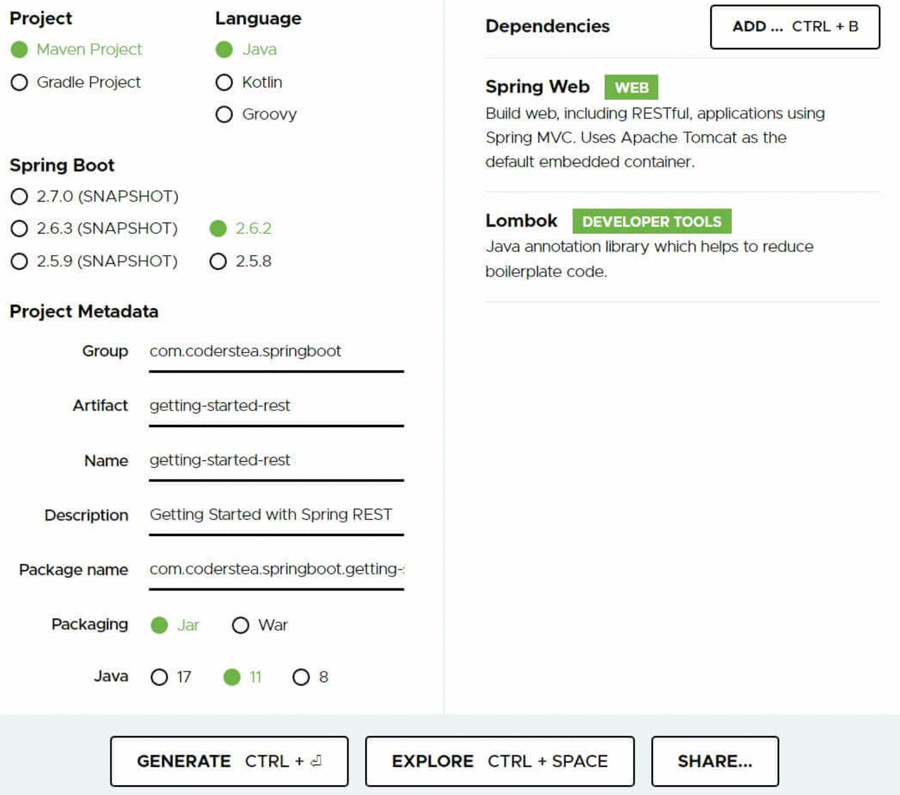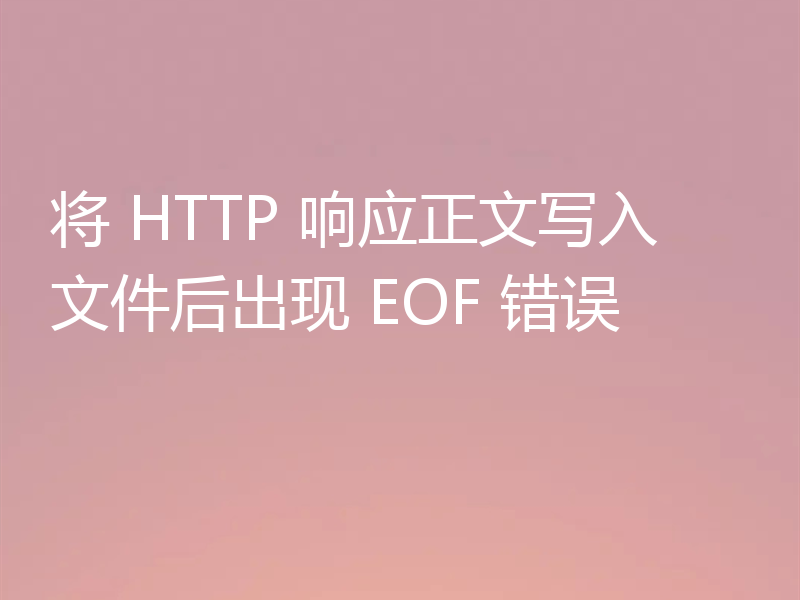如何让 Golang 脚本修改 Terraform(HCL 格式)文件中的值?
最近发现不少小伙伴都对Golang很感兴趣,所以今天继续给大家介绍Golang相关的知识,本文《如何让 Golang 脚本修改 Terraform(HCL 格式)文件中的值?》主要内容涉及到等等知识点,希望能帮到你!当然如果阅读本文时存在不同想法,可以在评论中表达,但是请勿使用过激的措辞~
我正在尝试对我拥有的 terraform 文件进行少量自动化,该文件定义了 azure 网络安全组。本质上,我有一个网站和 ssh 访问,我只想允许我的公共 ip 地址,我可以从 icanhazip.com 获取该地址。我希望使用 golang 脚本将我的 ip 写入 .tf 文件的相关部分(本质上是设置 security_rule.source_address_prefixes 的值)。
我正在尝试在 golang 中使用 hclsimple 库,并尝试了 gohcl、hclwrite 等,但本质上我在将 hcl 文件转换为 golang 结构方面没有取得任何进展。
我的 terraform 文件(我相信是 hcl 格式)如下:
resource "azurerm_network_security_group" "my_nsg" {
name = "my_nsg"
location = "loc"
resource_group_name = "rgname"
security_rule = [
{
access = "deny"
description = "desc"
destination_address_prefix = "*"
destination_address_prefixes = []
destination_application_security_group_ids = []
destination_port_range = ""
destination_port_ranges = [
"123",
"456",
"789",
"1001",
]
direction = "inbound"
name = "allowinboundthing"
priority = 100
protocol = "*"
source_address_prefix = "*"
source_address_prefixes = [
# obtain from icanhazip.com
"1.2.3.4"
]
source_application_security_group_ids = []
source_port_range = "*"
source_port_ranges = []
},
{
access = "allow"
description = "grant acccess to app"
destination_address_prefix = "*"
destination_address_prefixes = []
destination_application_security_group_ids = []
destination_port_range = ""
destination_port_ranges = [
"443",
"80",
]
direction = "inbound"
name = "allowipinbound"
priority = 200
protocol = "*"
source_address_prefix = ""
source_address_prefixes = [
# obtain from icanhazip.com
"1.2.3.4"
]
source_application_security_group_ids = []
source_port_range = "*"
source_port_ranges = []
}
]
}
这是我用我的 golang 脚本所得到的,试图将上述数据表示为结构,然后解码 .tf 文件本身(我从 hclsimple 本地复制了几个方法,以便拥有它按照其文档中的建议解码 .tf 文件。
package main
import (
"fmt"
"io"
"io/ioutil"
"log"
"os"
"path/filepath"
"strings"
"github.com/hashicorp/hcl/v2"
"github.com/hashicorp/hcl/v2/gohcl"
"github.com/hashicorp/hcl/v2/hclsimple"
"github.com/hashicorp/hcl/v2/hclsyntax"
"github.com/hashicorp/hcl/v2/json"
)
type config struct {
networksecuritygroup []networksecuritygroup `hcl:"resource,block"`
}
type networksecuritygroup struct {
type string `hcl:"azurerm_network_security_group,label"`
name string `hcl:"mick-linux3-nsg,label"`
nameattr string `hcl:"name"`
location string `hcl:"location"`
resourcegroupname string `hcl:"resource_group_name"`
securityrule []securityrule `hcl:"security_rule,block"`
}
type securityrule struct {
access string `hcl:"access"`
description string `hcl:"description"`
destinationaddressprefix string `hcl:"destination_address_prefix"`
destinationaddressprefixes []string `hcl:"destination_address_prefixes"`
destinationapplicationsecuritygroupids []string `hcl:"destination_application_security_group_ids"`
destinationportrange string `hcl:"destination_port_range"`
destinationportranges []string `hcl:"destination_port_ranges"`
direction string `hcl:"direction"`
name string `hcl:"name"`
priority int `hcl:"priority"`
protocol string `hcl:"protocol"`
sourceaddressprefix string `hcl:"source_address_prefix"`
sourceaddressprefixes []string `hcl:"source_address_prefixes"`
sourceapplicationsecuritygroupids []string `hcl:"source_application_security_group_ids"`
sourceportrange string `hcl:"source_port_range"`
sourceportranges []string `hcl:"source_port_ranges"`
}
func main() {
// lets pass this in as a param?
configfilepath := "nsg.tf"
// create new config struct
var config config
// this decodes the tf file into the config struct, and hydrates the values
err := mydecodefile(configfilepath, nil, &config)
if err != nil {
log.fatalf("failed to load configuration: %s", err)
}
log.printf("configuration is %#v", config)
// let's read in the file contents
file, err := os.open(configfilepath)
if err != nil {
fmt.printf("failed to read file: %v\n", err)
return
}
defer file.close()
// read the file and output as a []bytes
bytes, err := io.readall(file)
if err != nil {
fmt.println("error reading file:", err)
return
}
// parse, decode and evaluate the config of the .tf file
hclsimple.decode(configfilepath, bytes, nil, &config)
// iterate through the rules until we find one with
// description = "grant acccess to flask app"
// code go here
for _, nsg := range config.networksecuritygroup {
fmt.printf("security rule: %s", nsg.securityrule)
}
}
// basically copied from here https://github.com/hashicorp/hcl/blob/v2.16.2/hclsimple/hclsimple.go#l59
// but modified to handle .tf files too
func mydecode(filename string, src []byte, ctx *hcl.evalcontext, target interface{}) error {
var file *hcl.file
var diags hcl.diagnostics
switch suffix := strings.tolower(filepath.ext(filename)); suffix {
case ".tf":
file, diags = hclsyntax.parseconfig(src, filename, hcl.pos{line: 1, column: 1})
case ".hcl":
file, diags = hclsyntax.parseconfig(src, filename, hcl.pos{line: 1, column: 1})
case ".json":
file, diags = json.parse(src, filename)
default:
diags = diags.append(&hcl.diagnostic{
severity: hcl.diagerror,
summary: "unsupported file format",
detail: fmt.sprintf("cannot read from %s: unrecognized file format suffix %q.", filename, suffix),
})
return diags
}
if diags.haserrors() {
return diags
}
diags = gohcl.decodebody(file.body, ctx, target)
if diags.haserrors() {
return diags
}
return nil
}
// taken from here https://github.com/hashicorp/hcl/blob/v2.16.2/hclsimple/hclsimple.go#l89
func mydecodefile(filename string, ctx *hcl.evalcontext, target interface{}) error {
src, err := ioutil.readfile(filename)
if err != nil {
if os.isnotexist(err) {
return hcl.diagnostics{
{
severity: hcl.diagerror,
summary: "configuration file not found",
detail: fmt.sprintf("the configuration file %s does not exist.", filename),
},
}
}
return hcl.diagnostics{
{
severity: hcl.diagerror,
summary: "failed to read configuration",
detail: fmt.sprintf("can't read %s: %s.", filename, err),
},
}
}
return mydecode(filename, src, ctx, target)
}
当我运行代码时,本质上我正在努力定义 networksecuritygroup.securityrule,并使用上述代码收到以下错误:
2023/05/24 11:42:11 Failed to load configuration: nsg.tf:6,3-16: Unsupported argument; An argument named "security_rule" is not expected here. Did you mean to define a block of type "security_rule"? exit status 1
非常感谢任何建议
正确答案
因此,目前 https://github.com/minamijoyo/hcledit 是不可能的(请参阅这里 https://github.com/minamijoyo/hcledit/issues/50 - 这个建议 hclwrite 本身需要进行更改以方便)
所以我按照@martin atkins 的建议进行了解决:
我创建了一个包含 locals 变量的 locals.tf 文件,然后我在 nsg 安全规则中引用该变量:
locals {
my_ip = "1.2.3.4"
}
现在我只需获取我的 ip 并使用 sed 更新 locals.tf 文件中的值
my_ip=$(curl -s -4 icanhazip.com) sed -i "s|my_ip = \".*\"|my_ip = \"$my_ip\"|" locals.tf
以上就是《如何让 Golang 脚本修改 Terraform(HCL 格式)文件中的值?》的详细内容,更多关于的资料请关注golang学习网公众号!
 Spring Boot Rest常用框架注解有哪些
Spring Boot Rest常用框架注解有哪些
- 上一篇
- Spring Boot Rest常用框架注解有哪些

- 下一篇
- GoLang 中的时间戳和时区
-

- Golang · Go问答 | 1年前 |
- 在读取缓冲通道中的内容之前退出
- 139浏览 收藏
-

- Golang · Go问答 | 1年前 |
- 戈兰岛的全球 GOPRIVATE 设置
- 204浏览 收藏
-

- Golang · Go问答 | 1年前 |
- 如何将结构作为参数传递给 xml-rpc
- 325浏览 收藏
-

- Golang · Go问答 | 1年前 |
- 如何用golang获得小数点以下两位长度?
- 478浏览 收藏
-

- Golang · Go问答 | 1年前 |
- 如何通过 client-go 和 golang 检索 Kubernetes 指标
- 486浏览 收藏
-

- Golang · Go问答 | 1年前 |
- 将多个“参数”映射到单个可变参数的习惯用法
- 439浏览 收藏
-

- Golang · Go问答 | 1年前 |
- 将 HTTP 响应正文写入文件后出现 EOF 错误
- 357浏览 收藏
-

- Golang · Go问答 | 1年前 |
- 结构中映射的匿名列表的“复合文字中缺少类型”
- 352浏览 收藏
-

- Golang · Go问答 | 1年前 |
- NATS Jetstream 的性能
- 101浏览 收藏
-

- Golang · Go问答 | 1年前 |
- 如何将复杂的字符串输入转换为mapstring?
- 440浏览 收藏
-

- Golang · Go问答 | 1年前 |
- 相当于GoLang中Java将Object作为方法参数传递
- 212浏览 收藏
-

- Golang · Go问答 | 1年前 |
- 如何确保所有 goroutine 在没有 time.Sleep 的情况下终止?
- 143浏览 收藏
-

- 前端进阶之JavaScript设计模式
- 设计模式是开发人员在软件开发过程中面临一般问题时的解决方案,代表了最佳的实践。本课程的主打内容包括JS常见设计模式以及具体应用场景,打造一站式知识长龙服务,适合有JS基础的同学学习。
- 543次学习
-

- GO语言核心编程课程
- 本课程采用真实案例,全面具体可落地,从理论到实践,一步一步将GO核心编程技术、编程思想、底层实现融会贯通,使学习者贴近时代脉搏,做IT互联网时代的弄潮儿。
- 516次学习
-

- 简单聊聊mysql8与网络通信
- 如有问题加微信:Le-studyg;在课程中,我们将首先介绍MySQL8的新特性,包括性能优化、安全增强、新数据类型等,帮助学生快速熟悉MySQL8的最新功能。接着,我们将深入解析MySQL的网络通信机制,包括协议、连接管理、数据传输等,让
- 500次学习
-

- JavaScript正则表达式基础与实战
- 在任何一门编程语言中,正则表达式,都是一项重要的知识,它提供了高效的字符串匹配与捕获机制,可以极大的简化程序设计。
- 487次学习
-

- 从零制作响应式网站—Grid布局
- 本系列教程将展示从零制作一个假想的网络科技公司官网,分为导航,轮播,关于我们,成功案例,服务流程,团队介绍,数据部分,公司动态,底部信息等内容区块。网站整体采用CSSGrid布局,支持响应式,有流畅过渡和展现动画。
- 485次学习
-

- ChatExcel酷表
- ChatExcel酷表是由北京大学团队打造的Excel聊天机器人,用自然语言操控表格,简化数据处理,告别繁琐操作,提升工作效率!适用于学生、上班族及政府人员。
- 3171次使用
-

- Any绘本
- 探索Any绘本(anypicturebook.com/zh),一款开源免费的AI绘本创作工具,基于Google Gemini与Flux AI模型,让您轻松创作个性化绘本。适用于家庭、教育、创作等多种场景,零门槛,高自由度,技术透明,本地可控。
- 3383次使用
-

- 可赞AI
- 可赞AI,AI驱动的办公可视化智能工具,助您轻松实现文本与可视化元素高效转化。无论是智能文档生成、多格式文本解析,还是一键生成专业图表、脑图、知识卡片,可赞AI都能让信息处理更清晰高效。覆盖数据汇报、会议纪要、内容营销等全场景,大幅提升办公效率,降低专业门槛,是您提升工作效率的得力助手。
- 3412次使用
-

- 星月写作
- 星月写作是国内首款聚焦中文网络小说创作的AI辅助工具,解决网文作者从构思到变现的全流程痛点。AI扫榜、专属模板、全链路适配,助力新人快速上手,资深作者效率倍增。
- 4517次使用
-

- MagicLight
- MagicLight.ai是全球首款叙事驱动型AI动画视频创作平台,专注于解决从故事想法到完整动画的全流程痛点。它通过自研AI模型,保障角色、风格、场景高度一致性,让零动画经验者也能高效产出专业级叙事内容。广泛适用于独立创作者、动画工作室、教育机构及企业营销,助您轻松实现创意落地与商业化。
- 3792次使用
-
- GoLand调式动态执行代码
- 2023-01-13 502浏览
-
- 用Nginx反向代理部署go写的网站。
- 2023-01-17 502浏览
-
- Golang取得代码运行时间的问题
- 2023-02-24 501浏览
-
- 请问 go 代码如何实现在代码改动后不需要Ctrl+c,然后重新 go run *.go 文件?
- 2023-01-08 501浏览
-
- 如何从同一个 io.Reader 读取多次
- 2023-04-11 501浏览



